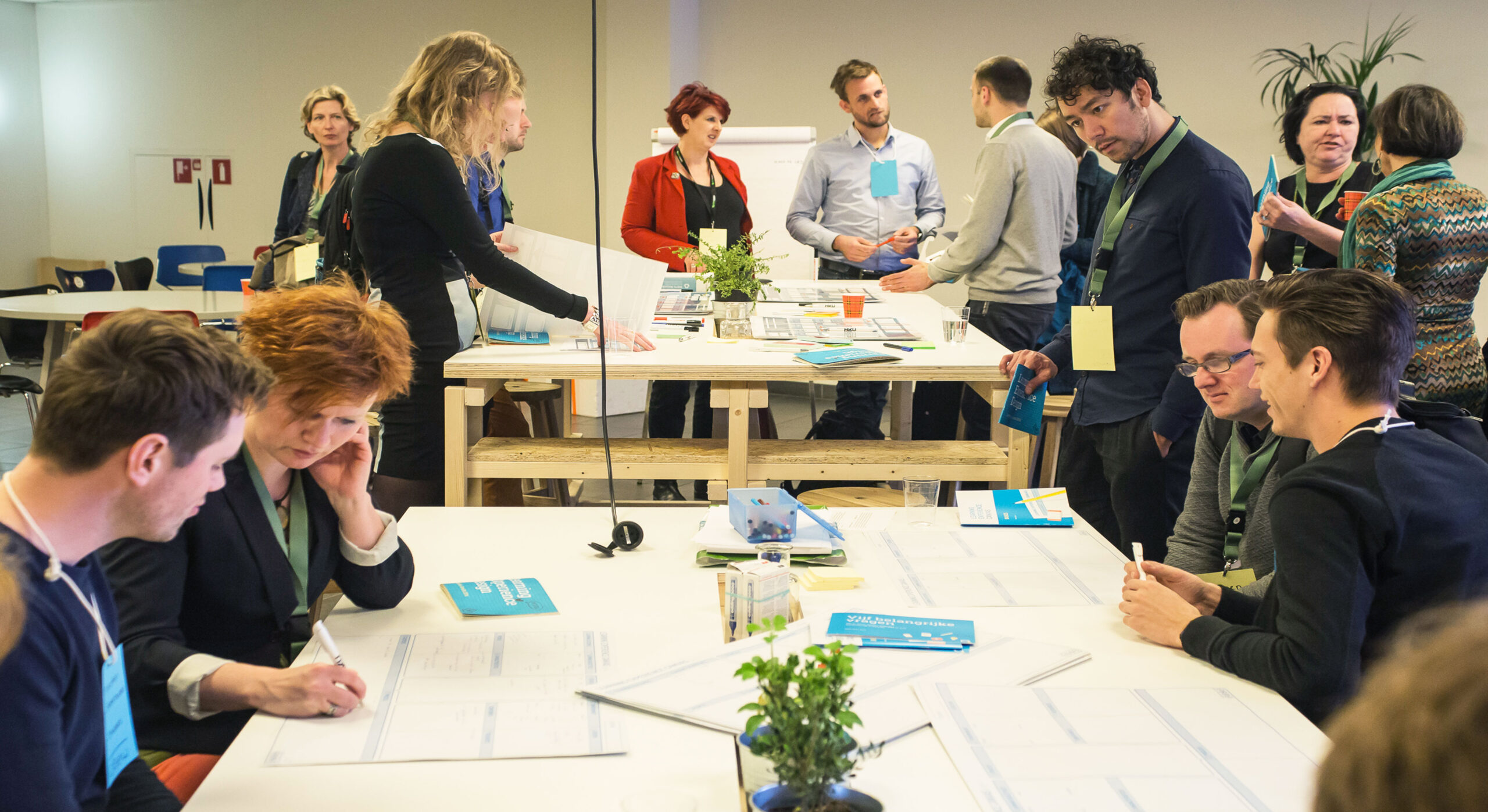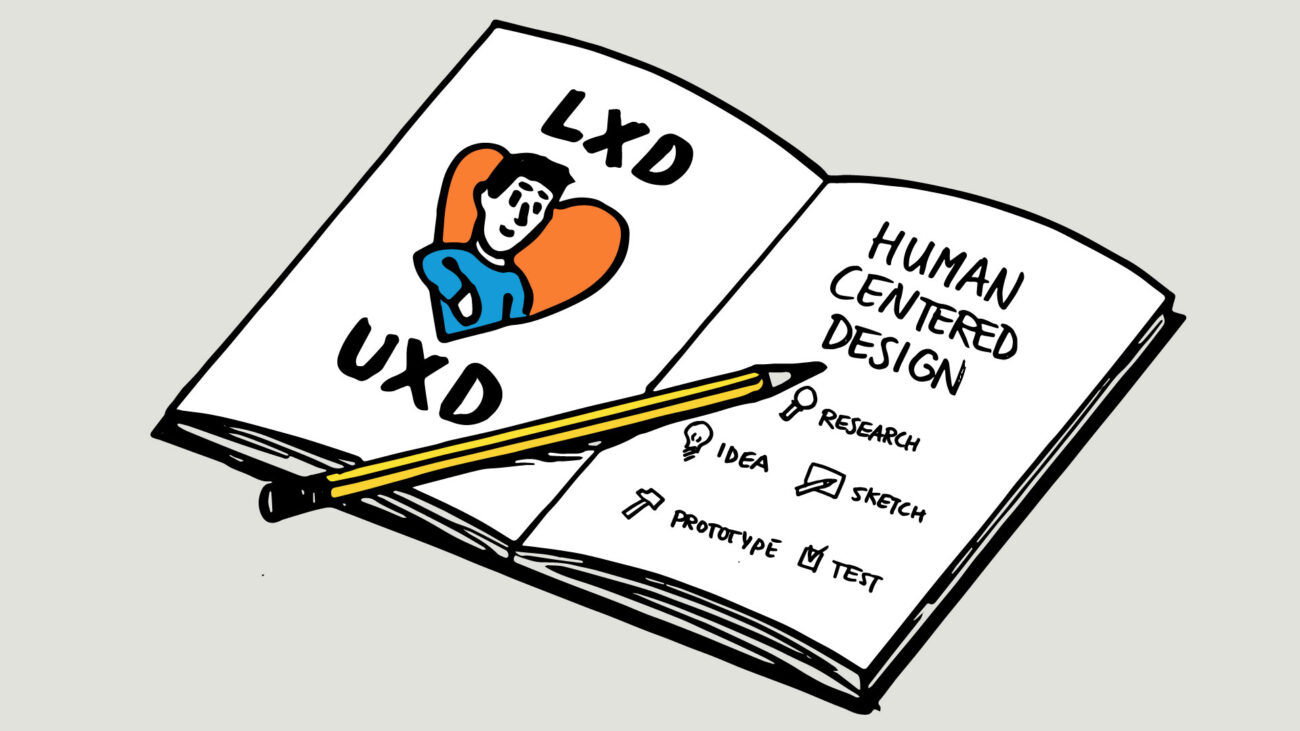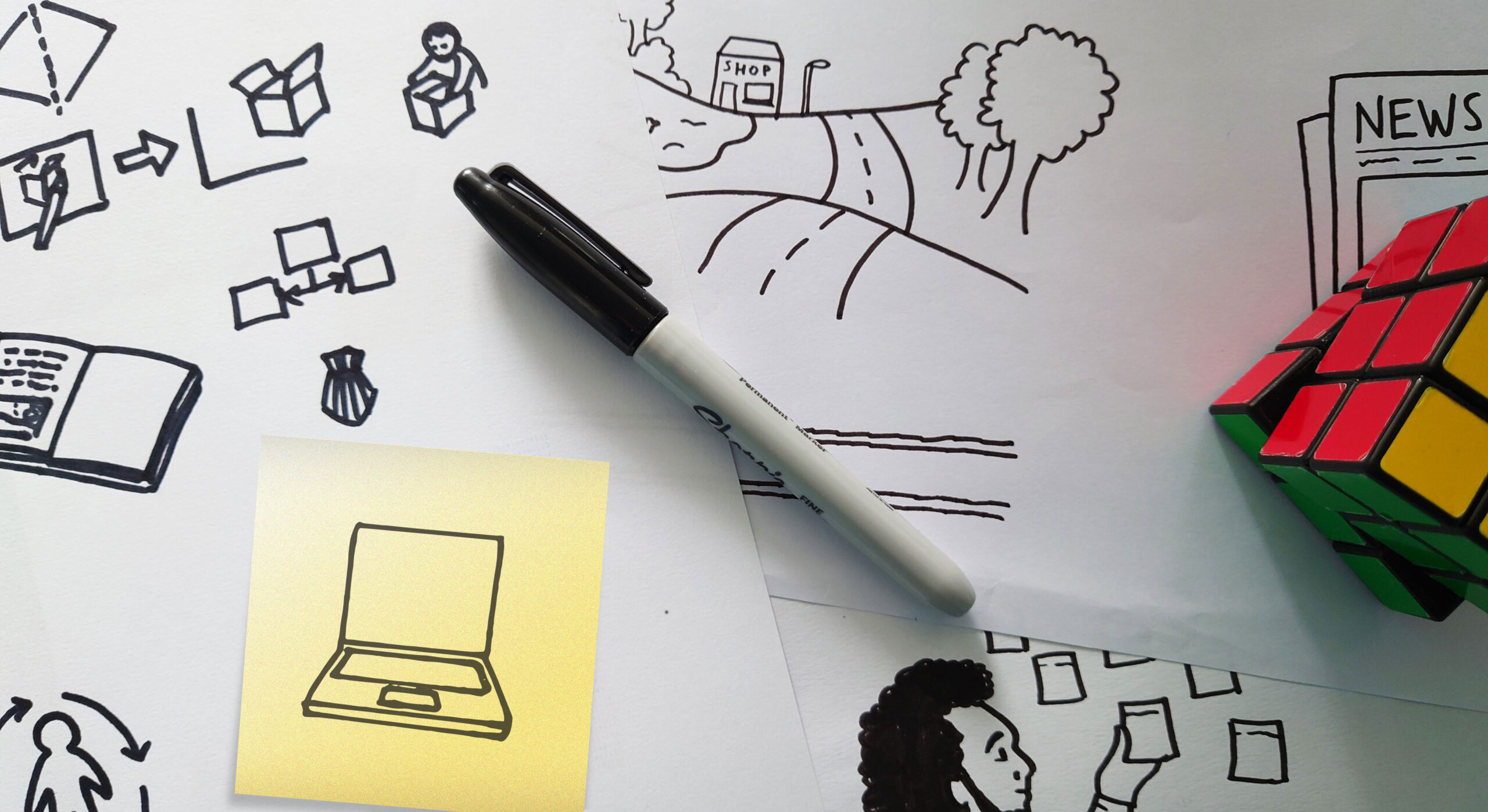March 30 2023 – Niels Floor |
When you look at the definition of learning experience design (LXD), the term human centered design (HCD) is featured prominently. Even if you’ve never heard of HCD, it’s easy to imagine why this is a sensible concept. But what is HCD exactly? Find out how to benefit from human centered design for designing great learning experiences.
Human centered design (HCD) puts people at the center of the design process to create products, services and experiences that are tailored to the needs of your target audience.
“The challenge is to use the principles of human-centered design to produce positive results, products that enhance lives and add to our pleasure and enjoyment.” – Don Norman
HCD is closely related to user centered design (UCD). UCD comes from user experience design (UXD) which is a foundational field for LXD. To understand the value of HCD it’s good to know more about the principles of UCD and how they can be applied to LXD.
“User-centered design (UCD) is an iterative design process in which designers focus on the users and their needs in each phase of the design process. In UCD, design teams involve users throughout the design process via a variety of research and design techniques, to create highly usable and accessible products for them.” – Interaction Design Foundation
Four design principles
There are four principles in UCD that are quite similar to HCD. I’ve adapted these principles specifically for human centered learning experience design:
It’s about people
Focus on the people you design for to create experiences that work for them in real life. When we talk about learners, it’s easy to forget that we are dealing with real people. Individual human beings with their own characteristics, challenges, dreams, and desires. Always be aware of who it is you are designing for and involve them in each step of the design process.
Solve the root problems
Dig deeper to find and solve the root problems for the learner. These problems can be learning related but that’s not always the case. For example, emotional, physiological or practical problems may also need to be solved for the learner to succeed. Defining a desirable learning outcome shows empathy for the learner and a clear understanding of their root problems and personal challenges. Your goal is to support, motivate and guide them on their way to reaching that learning outcome.
Everything is related
A learning experience isn’t an isolated event. People, their experiences, and their surroundings are all related. There are many moving parts that determine how and what we experience. If you change one thing, it will often change something else, even if that’s not your intention. Being aware of how things are related, enables you to create designs that fit seamlessly into the lives of the learners. Using the Learning Experience Canvas is a great tool for uncovering these relations and connecting the dots between different aspects the experience, the people, and their surroundings.
Design in small steps
A design process happens in small steps. Each step brings you closer to defining the root problems you are trying to solve and finding the solution to solve those problems. This creative process is fueled by design skills like ideation, conceptualization, visualization, prototyping, and testing. By constantly applying these skills you allow your design to take shape over time instead of knowing what you are going to create from the start.

From user centered to human centered
HCD is a level up from UCD in the sense that it’s not just about a user, it’s about human beings. This is a significant difference as it doesn’t limit the people you design for to a specific role like a user or learner. It’s a more holistic approach that does justice to the complexity and diversity of people and their experiences. That’s why HCD is a better fit for LXD than UCD as people are more than learners.
That’s one reason why it’s learning experience design instead of learner experience design. Another reason it’s not learner experience design, is because there are typically other people, who aren’t necessarily learners, involved as well. They are also part of your target audience, although they are not the primary group you design for. It’s convenient to use the term learner for the primary people you design for. Just remember they are real people and not just learners if you want to successfully apply human centered design for designing great learning experiences.
Benefits of human centered design.
HCD teaches us that we don’t have all the answers from the start. You learn as your design evolves. That’s why it’s vital to start with an open mind and an empty canvas. Instead of sticking to the first decent idea that comes up, you want to push your creative boundaries and not be afraid to try something completely different. That’s a typical designers’ perspective as we are used to start from scratch and create something unique.
To solve root problems, you need creative solutions. Typically, there are no standard solutions for the types of problems a LX designer is faced with. That’s why you need the design skills and process that enable you to apply HCD successfully. What does that look like? Here are five reasons to design in a human centered way:
- By looking at the complete experience, instead of just the course, training, module, or class, you have a chance to impact the life of the learner in a more profound and lasting way.
- Continuously ideating, sketching, prototyping, and testing enables you to come up with original and refined designs that are uniquely created for your target audience.
- Having a deeper understanding and empathy for the people you design for allows you to design learning experiences that connect a cognitive and emotional level and respect personal, professional, and cultural differences.
- Involving the learner in all steps of the design process increases the chances of reaching the desired learning outcome in a way that suits the learner.
- Being aware of how our experiences are related to the people and world around us enables you to design less intrusive and more seamless learning experiences.
Getting started with human centered design.
Let’s get started with Human Centered Design for designing great learning experiences. The principles of HCD are quite straight forward and relatively easy to understand. However, applying them is challenging and easily underestimated.
My advice is to select one or two principles and apply them in your next project. Try to figure out which design skills you need to (further) develop to make your project more human centered. For example, if you want to design in smaller steps, you can work on sketching. If you’ve never sketched much before it’s going to take time to master that skill. The important thing is to start with it and keep doing it.
Once you start implementing HCD principles you will probably run into practical limitations. For example, you may want to test your design more often than your client is willing to pay for. Or you don’t always have direct access to the learner for your design research. In those situations, you want to get creative and make the best of it. You can spread your budget for testing over more smaller tests instead of one or two larger tests. Or you can reach out to people who are in a similar demographic as your learners and use their input for your design research.
Over time, you will be able to work more human centered as you add more HCD principles to your projects and develop your design skills. I wish you a wonderful journey towards creating human centered learning experiences!


